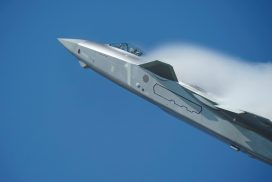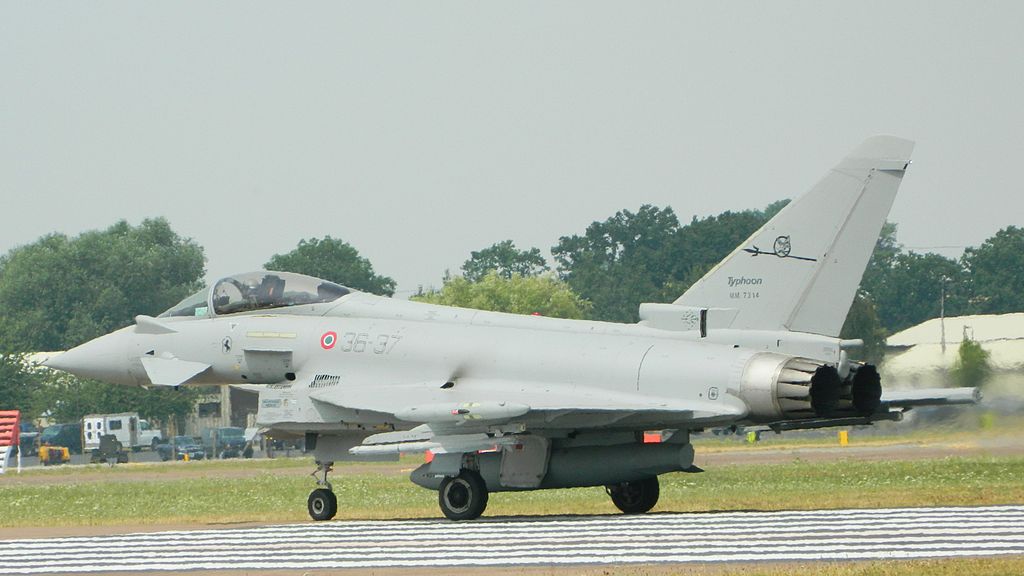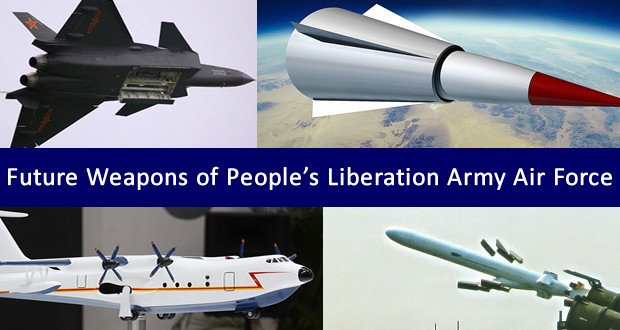a href=”http://bp1.blogger.com/_RRbP6fpJWAc/Rk1PFnh84KI/AAAAAAAAAPo/AgxTZjgIvts/s1600-h/Typhoon.jpg”img id=”BLOGGER_PHOTO_ID_5065792113791000738″ style=”FLOAT: left; MARGIN: 0px 10px 10px 0px; CURSOR: hand” height=”279″ alt=”” src=”http://bp1.blogger.com/_RRbP6fpJWAc/Rk1PFnh84KI/AAAAAAAAAPo/AgxTZjgIvts/s320/Typhoon.jpg” width=”221″ border=”0″ //a It was only after landing his Eurofighter Typhoon on May 12 that Italian pilot Ivan Laudizi realized he had just flown the first real mission involving the flagship European fighter.br /Laudizi’s jet was already in the air with a second Typhoon after a training scramble from Groseto Air Base when they were ordered to intercept a Tunisian A320 over Sicily. After climbing to 40,000 feet and reaching 0.9 Mach, the two aircraft arrived in 30 minutes, descending to 30,000 feet to make the intercept.br /“It was pretty much like many other interceptions I have made, although this one was much easier,” he said, adding that this was no surprise since his last intercept was aboard an F-104.br /By trading an aging Starfighter for the Typhoon, Laudizi personifies the dramatic break with the past that Italy has made in buying the new fighter.br /As for the future, the air-defense emphasis the Italian Air Force is now putting on the Typhoon is driven by the expected arrival of the Joint Strike Fighter to take care of ground attack duties.br /In the meantime, the 9th and 20th squadrons of the 4th Wing at Groseto have racked up flying hours since going on alert for the first time in December 2005, reaching 3,900 hours this month, said Col. Vincenzo Nuzzo, commanding officer of the 4th. A peak of 253 flying hours was reached in March.br /The Eurofighter stable is now fluctuating around 22 aircraft as Typhoons return to Finmeccanica unit Alenia Aeronautica for upgrades. The first aircraft equipped with the Pirate Infra-Red Search and Track sensor will be delivered this summer, base officials said.br /With 20 pilots now trained to alert level — each set to fly around 12.5 hours per month this year — and six more in training, the Air Force plans to have its Typhoons on alert status six days a month by June, rising to 15 days a month by June 2008, slowly taking over from the F-16s Italy has leased as a stopgap.br /From October, the Air Force also plans to base its first Typhoon at its Gioia del Colle air base in southern Italy, providing faster coverage of the country’s south and sharing coverage with Groseto over Rome.br /This month, Typhoons will fly against Saab Gripen aircraft for the first time after being deployed to the Italian island of Sardinia for a month for exercises.br /Italy’s Eurofighter Typhoons are flying with two Advanced Medium-Range Air-to-Air Missiles and two AIM-9L missiles and a central fuel tank, in addition to the 27mm Mauser cannon, said Lt. Col. Daniele Picco, 9th squadron commander.br /During an open day for the press last week, pilots stressed the sensor-fusion capabilities of the aircraft as a key advantage over others they had flown, including Italy’s leased F-16s.br /Tranche 3 Trouble?br /But the growing edginess of Air Force officials about investing in Eurofighter’s third tranche indicates that Italy may yet trim up to 30 aircraft off its previously planned order of 121.br /In the run-up to a contract signature for Tranche 3, expected in early 2009 by the Eurofighter consortium, Italian officials are likely to remind industry that Typhoon spending has been decreed by the Italian parliament. If money spent on Tranches 1 and 2 has eaten into funds for the final order, they will argue, Italy’s Tranche 3 order of 46 aircraft could be jeopardized, despite potential penalty payments.br /A reluctance to spend too much on the pending air-to-ground capabilities of the aircraft also stems from Italy’s order of the Joint Strike Fighter, although one senior defense official sees a possible way out.br /“The Eurofighter has been supported by European governments hitherto, partly in order to boost Europe’s industrial capability,” he said. “That, in turn, should boost the chances of European industrial consortium to sell the aircraft overseas, which, in turn, should allow the consortium to bring down costs for its domestic customers.”br /That view was echoed by Eurofighter spokesman Wolfdietrich Hoeveler.br /“European air forces are today taking ownership of the Eurofighter, and we have to look to bring down costs and increase availabilities,” he said.br /The challenge faced by the consortium will be to depress costs even as it seeks to build up the air-to-ground capabilities that will further boost export chances, such as the e-scan Caesar radar prototype, which completed a flight test on Typhoons in Germany this month.
Menu
Copyright © 2007- 2024 • Defence Aviation • All Rights Reserved. Reproduction without explicit permission is prohibited.



